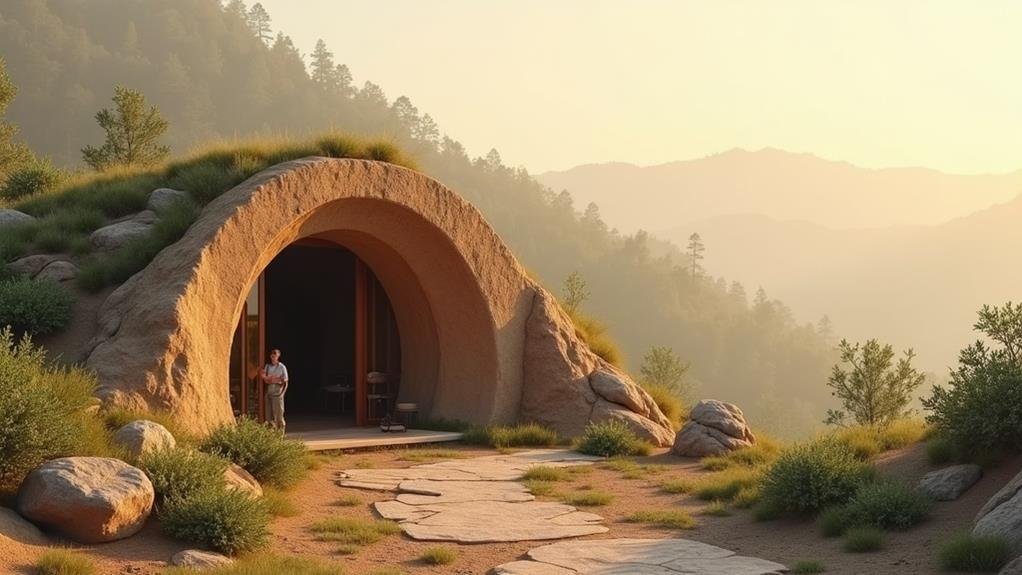What Are Earth Sheltered Homes and How Do They Function?
Have you ever considered how homes can blend seamlessly with the earth around them? Earth sheltered homes, built into or covered by earth, offer intriguing possibilities for energy efficiency and comfort. These structures utilize natural insulation and innovative designs to maintain stable temperatures and minimize energy costs. As you investigate what makes these homes unique, you’ll uncover their various forms and the surprising benefits they bring. But what challenges do they present, and how do these factors influence their viability in today’s world?
Definition of Earth Sheltered Homes
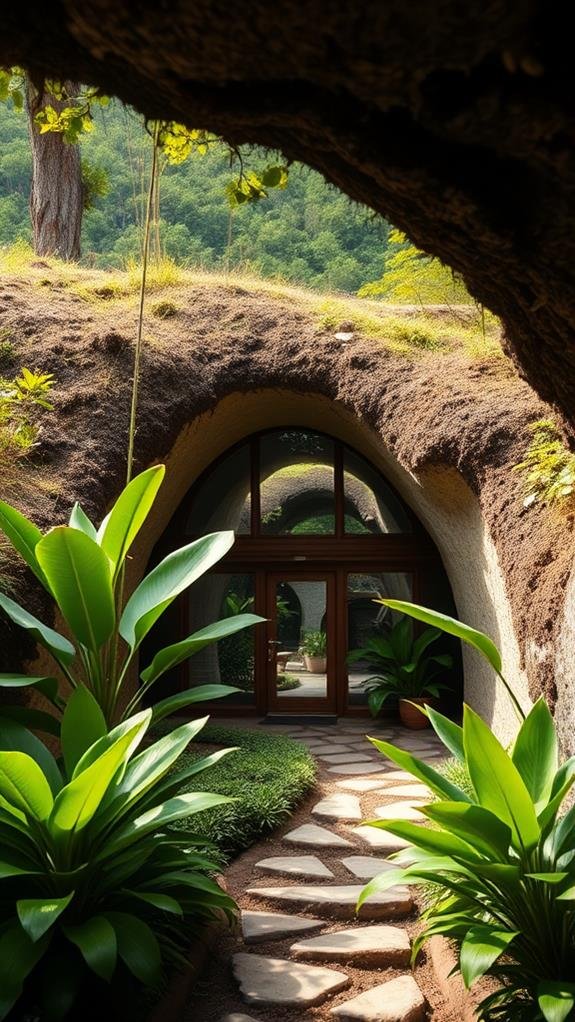
When you think about innovative housing, earth sheltered homes might catch your interest.
These fascinating structures are built into the ground or surrounded by earth, which helps them blend with the landscape. They’re designed to maximize energy efficiency, offering natural insulation against temperature changes.
Typically, you’ll find walls made of concrete, stone, or earth, which help keep them stable. This unique design not only protects the home from harsh weather but also reduces heating and cooling costs.
You might be surprised to learn that these homes can come in various styles, from cozy single-family dwellings to larger, multi-level designs.
Ultimately, earth sheltered homes present a creative solution to sustainable and eco-friendly living.
History and Evolution
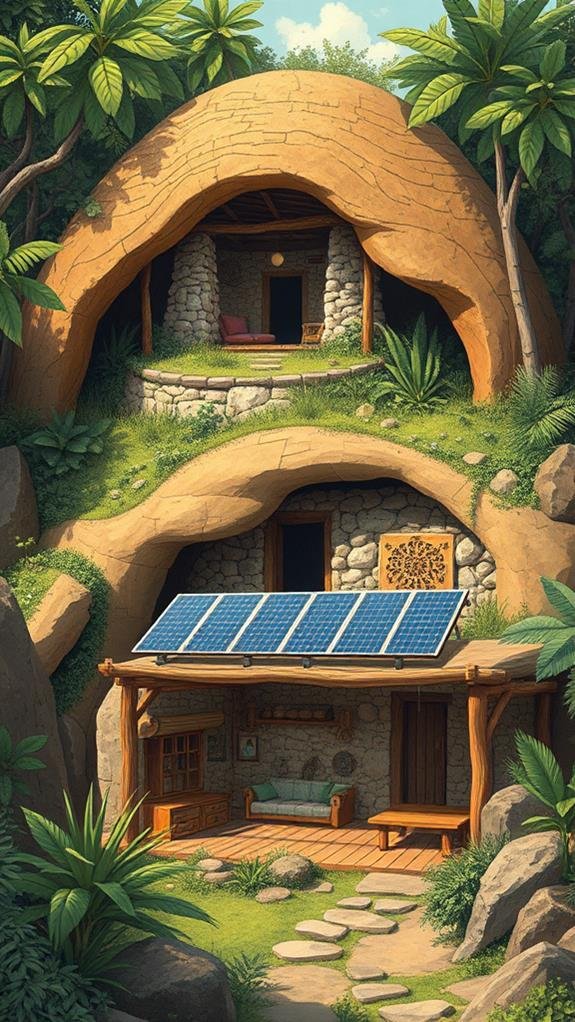
Earth sheltered homes have a rich history that dates back thousands of years. Early civilizations, like the ancient Greeks and Romans, often built homes into hillsides or used natural materials to help insulate their living spaces. These designs were practical, protecting people from harsh weather and conserving energy.
As cultures evolved, so did the use of earth sheltering. In colder regions, people dug shelters into the ground to stay warm during the winter months. In modern times, architects adopted these designs for sustainability and energy efficiency.
You might find that today’s earth sheltered homes combine traditional techniques with modern technology, promoting a harmonious relationship between human living and nature. This evolution highlights humanity’s ongoing quest for efficient and comfortable living solutions.
Types of Earth Sheltered Homes
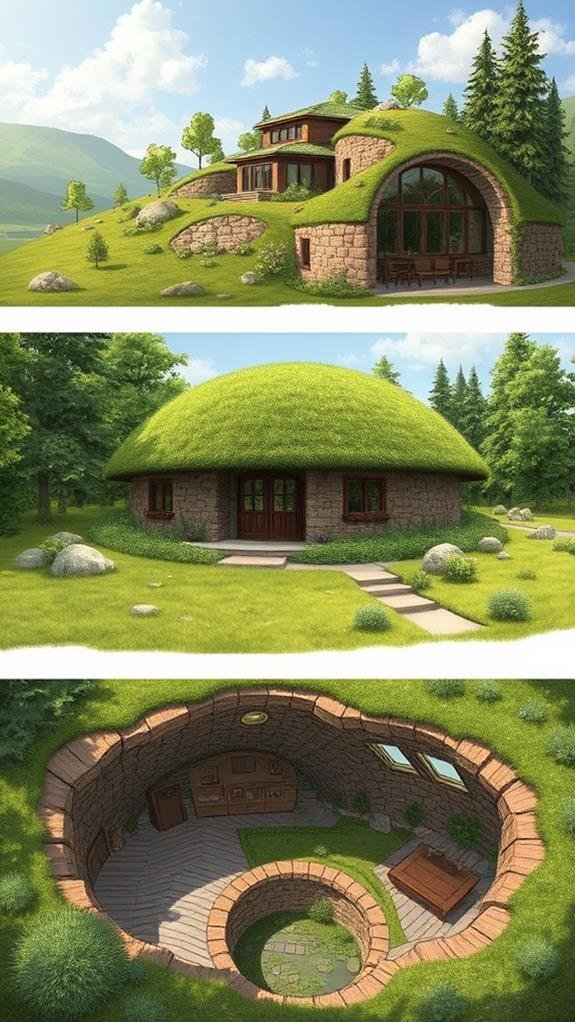
Have you ever wondered what different types of earth sheltered homes look like?
There are primarily two styles: bermed and subterranean. Bermed homes are built into a hillside, leaving one or more sides exposed to light. This design provides great insulation while blending nicely with nature.
Subterranean homes, on the other hand, are completely underground with minimal or no visible exterior. These homes often rely on innovative lighting solutions to brighten the interior.
Another interesting type is the partially earth-covered home, where the roof is covered with soil and vegetation. This design helps with temperature regulation and creates a lovely green space.
Each type offers unique benefits, making them a fascinating choice for eco-friendly living.
Unique Architectural Features
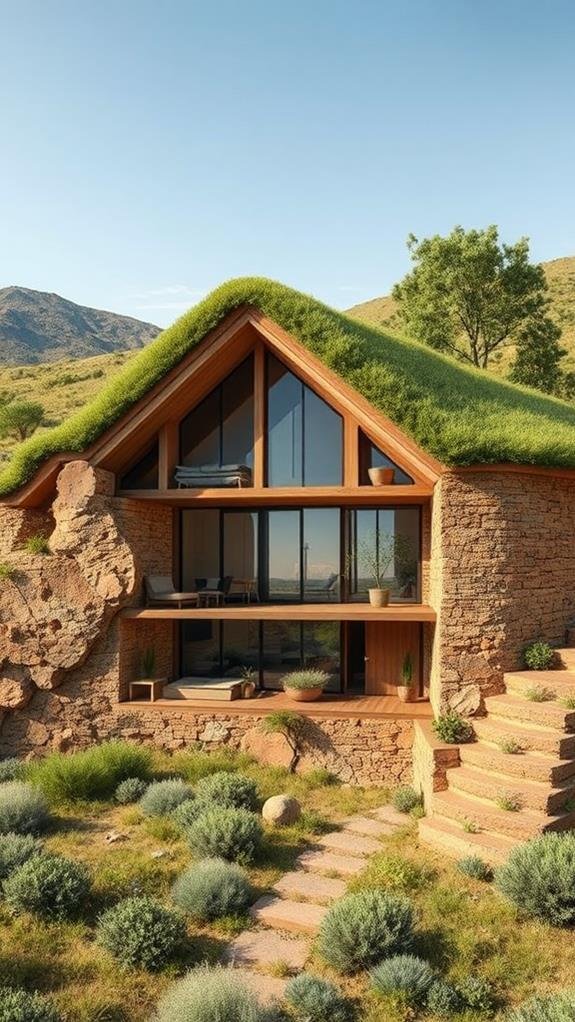
One of the most striking aspects of earth sheltered homes is their unique architectural features, which seamlessly blend aesthetics and sustainability.
These homes often incorporate curved roofs that mimic the natural landscape, giving them a harmonious look. The use of natural materials, like stone or wood, improves their connection to the environment.
You’ll notice large, strategically placed windows that bring in sunlight while offering stunning views of the surroundings. Additionally, these homes usually feature open floor plans, maximizing space and creating a cozy atmosphere.
Since they’re built into the earth, they often avoid traditional sharp angles, resulting in soft, inviting lines.
Environmental Benefits
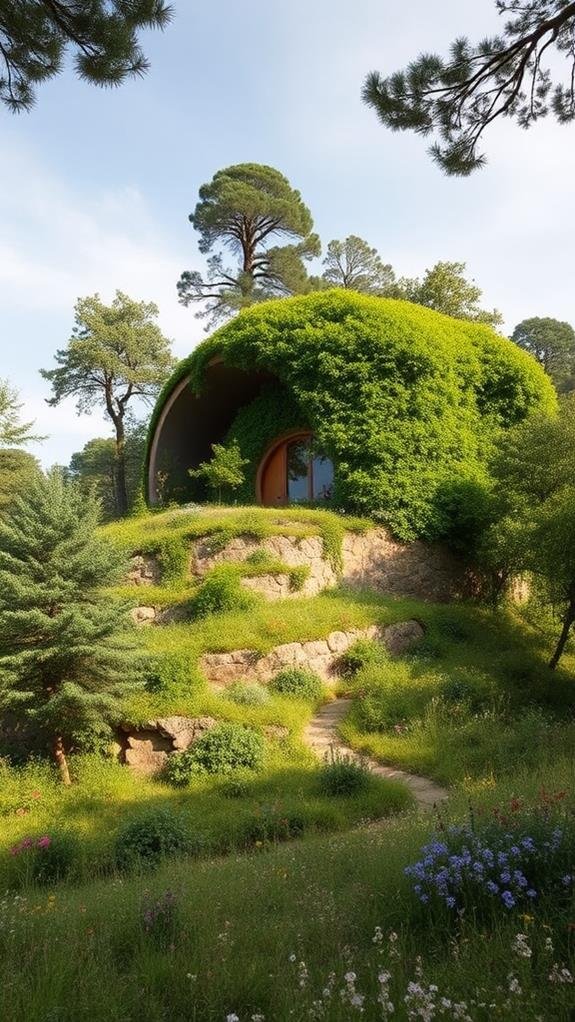
The environmental benefits of earth sheltered homes are significant and multifaceted.
First, they blend beautifully with nature, reducing the visual impact on landscapes.
Second, by using earth as insulation, these homes help maintain comfortable temperatures, minimizing the need for heating and cooling systems.
This natural insulation also reduces stormwater runoff since green roofs absorb rainwater, contributing to cleaner waterways.
Additionally, earth sheltered homes often use sustainable materials, promoting recycling and reducing waste.
They encourage biodiversity by incorporating plants and wildlife habitats into your living space.
By choosing one of these homes, you’re not just creating a cozy haven; you’re also playing an important role in protecting our planet’s future.
It’s a win-win for you and the environment!
Energy Efficiency Advantages
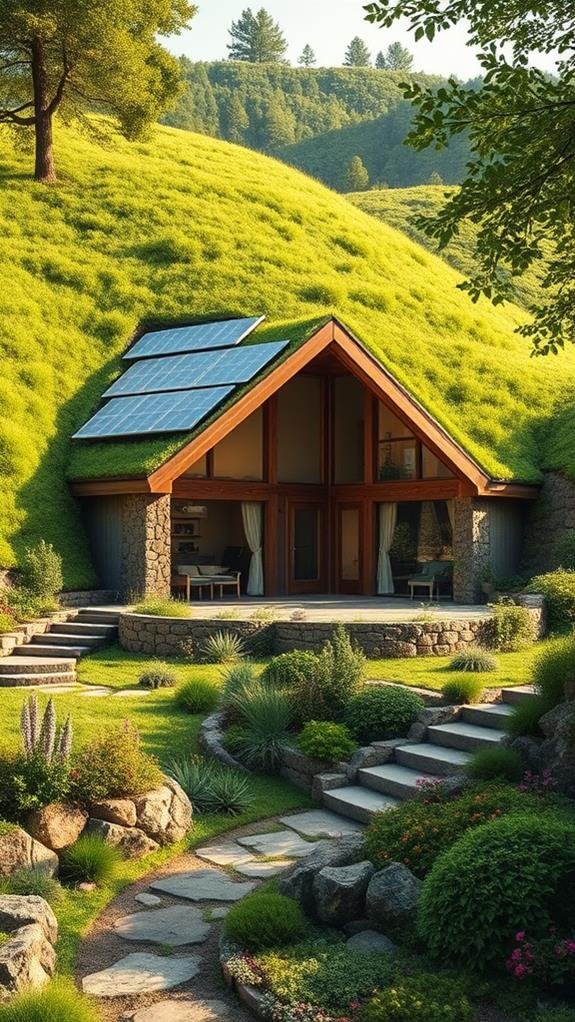
Earth sheltered homes not only provide environmental benefits but also excel in energy efficiency, making them a smart choice for homeowners.
These homes use the earth around them as insulation, which helps keep temperatures steady year-round. During hot summers, the ground keeps your living space cool, reducing the need for air conditioning. Conversely, in winter, the earth retains warmth, helping you save on heating costs.
This natural temperature regulation means you’ll use less energy, lowering your utility bills. Plus, the reduced reliance on heating and cooling systems means a smaller carbon footprint, which is great for the planet.
Thermal Performance
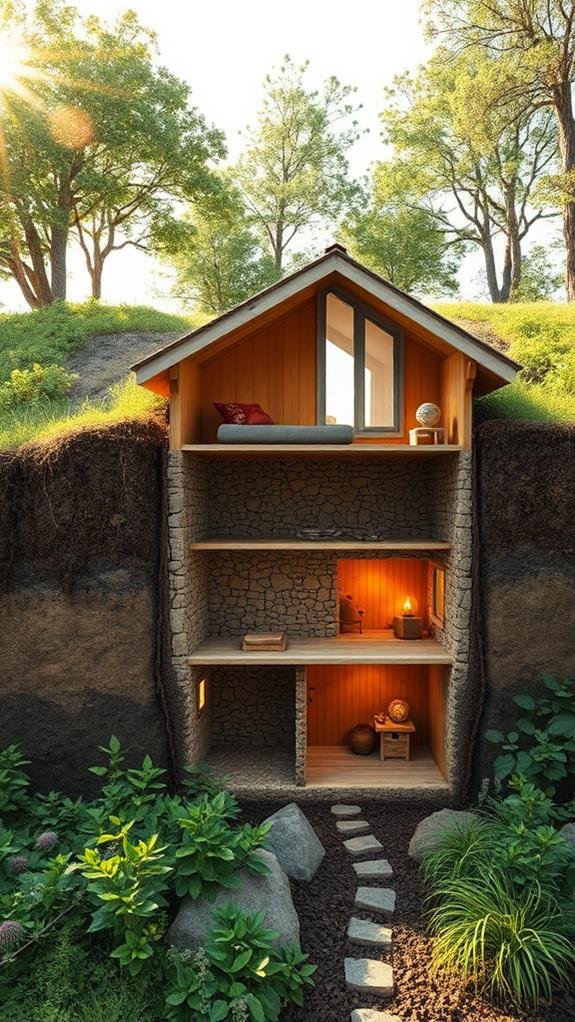
Thermal performance in earth sheltered homes is outstanding due to their unique design and natural insulation properties.
Because these homes are partially or fully built into the ground, they benefit from consistent underground temperatures. You’ll find that they stay cooler in the summer and warmer in the winter. This natural insulation means you’ll likely use less energy for heating and cooling, saving you money on utility bills.
Additionally, the surrounding earth acts like a buffer from extreme weather, reducing drafts and temperature fluctuations. With less reliance on conventional heating and cooling systems, you can enjoy a more comfortable living environment year-round.
Integration With Nature
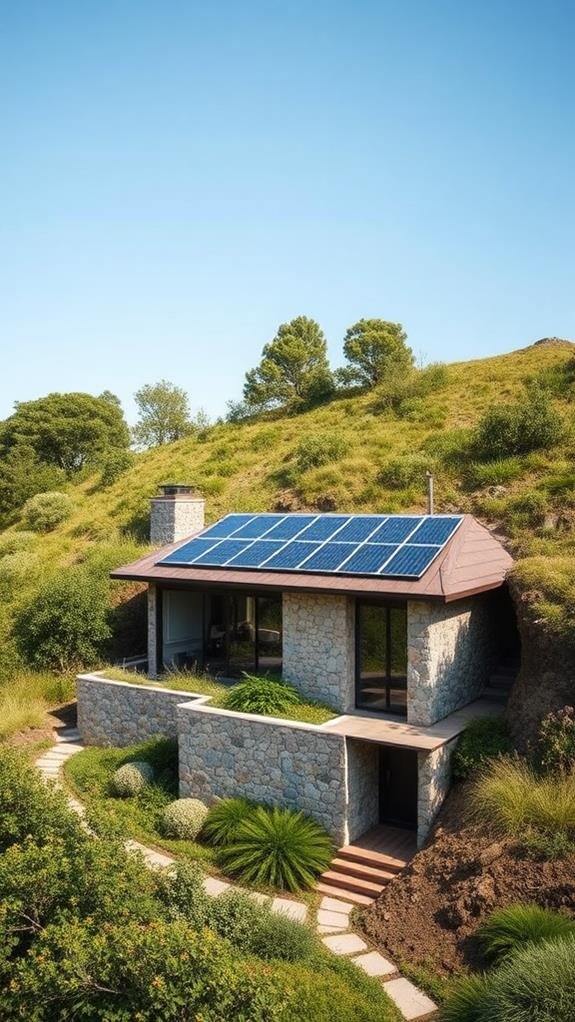
Integrating an earth sheltered home into its natural surroundings creates a harmonious living environment that uplifts both beauty and functionality.
By blending your home with the landscape, you can elevate the view and minimize visual impact. This design often allows for better air circulation and light distribution, helping you feel more connected to the outdoors.
You might choose to plant native vegetation on the roof or around your home, encouraging local wildlife to thrive.
Additionally, positioning windows to frame natural scenery can create a stunning backdrop while maximizing daylight.
This thoughtful interaction with nature not only makes your home more energy-efficient but also contributes to your overall well-being by bringing nature closer to your daily life.
Building Materials Used
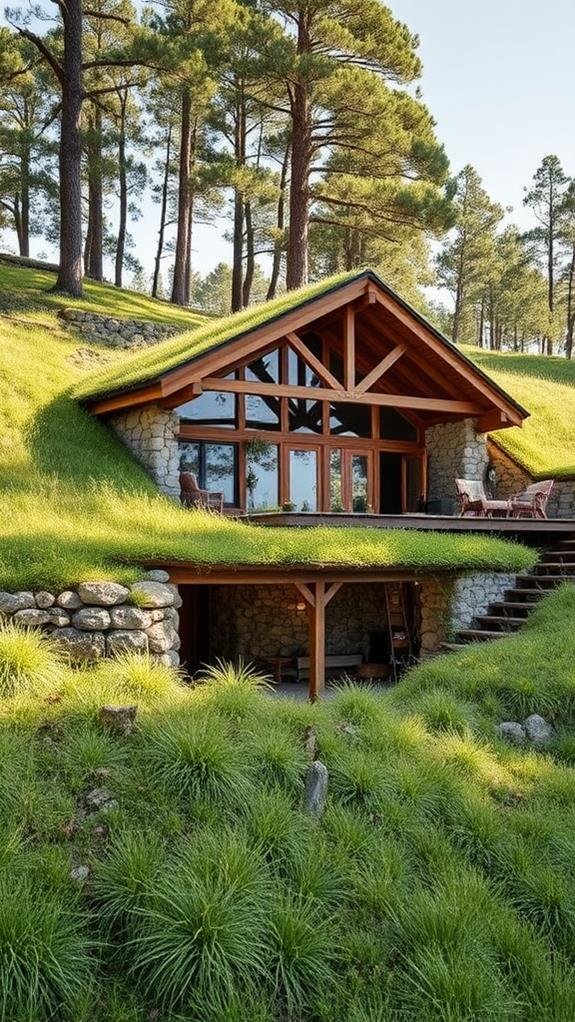
Often, builders select materials that improve the energy efficiency and durability of earth sheltered homes. Commonly, you’ll find thick concrete walls that not only provide strength but also help regulate temperature.
Insulated windows are vital too; they’ll let in natural light while keeping heat in during winter and out during summer. You might also notice the use of recycled materials, like reclaimed wood or metal, which reduce waste and lower environmental impact.
Roofs often consist of living vegetation, providing additional insulation and a natural aesthetic. Additionally, proper waterproofing is essential to protect against moisture.
Design Considerations
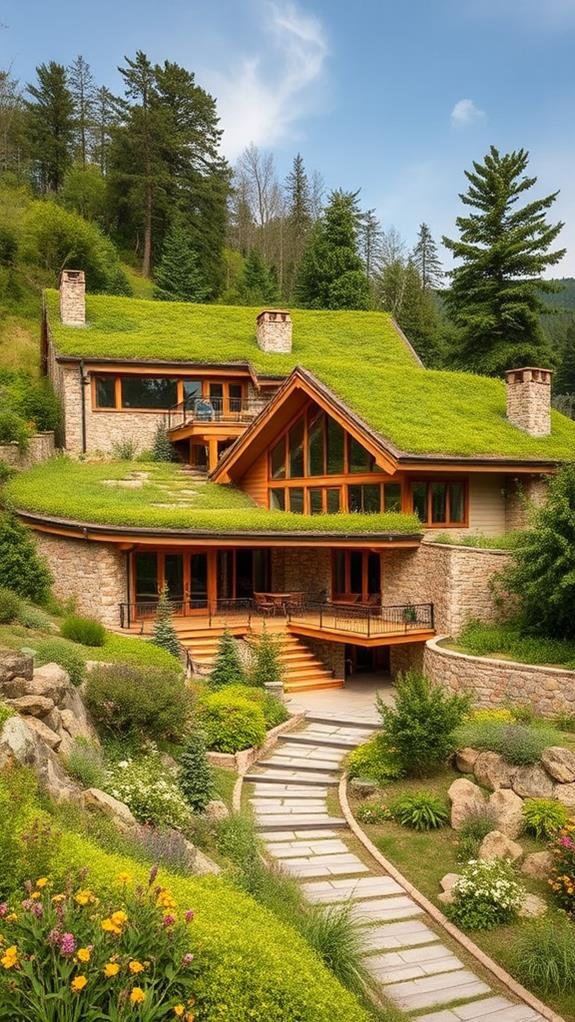
Choosing the right building materials for earth sheltered homes naturally leads to key design considerations that amplify their functionality and aesthetic appeal.
You’ll want to think about the layout and how natural light enters the space, as this can impact energy efficiency and comfort. Additionally, consider ventilation; good air circulation keeps your home fresh and cozy.
Don’t forget about insulation either—it’s essential for maintaining a stable temperature.
You can also incorporate outdoor elements, like terraces or gardens, to blend the home with the surrounding landscape. Colors and shapes can enrich beauty while ensuring the home blends harmoniously into its environment.
Challenges and Limitations
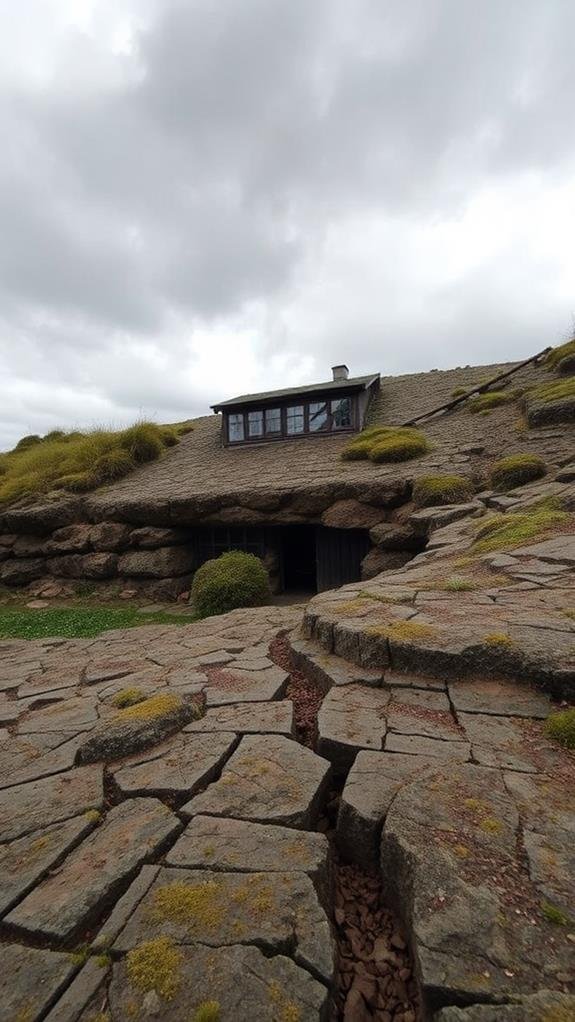
What challenges might arise when constructing earth sheltered homes?
First, securing the right land is vital. Not every location is suitable for this type of building, especially if you encounter rocky terrain or unstable soil.
Building codes can also pose issues, as some areas might’ve strict regulations. Additionally, you’ll need to take into account waterproofing, as moisture can seep into your home if not properly managed.
Ventilation is another concern; without adequate air circulation, indoor air quality can suffer.
Finally, initial construction costs can be higher than traditional homes, due to specialized materials and labor.
While these challenges are significant, planning and knowledgeable professionals can help you navigate them effectively, making your dream home a reality.
Popular Locations
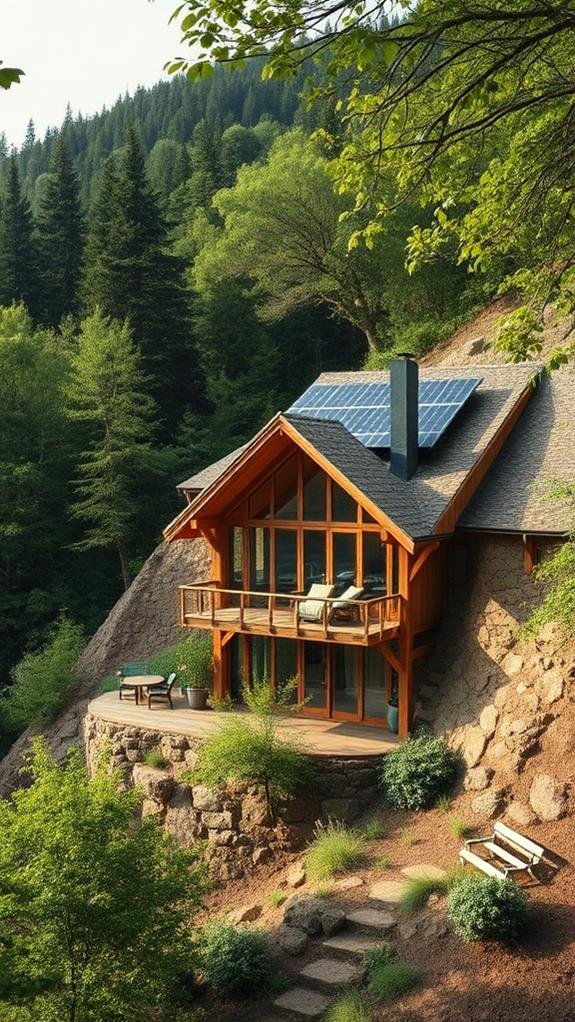
Finding the right spot for your earth sheltered home can greatly impact its functionality and comfort.
Popular locations often include hilly or sloped terrains, where you can dig into the ground, allowing natural insulation.
Places with stable soil are ideal, too, as they provide better support.
Regions with extreme weather conditions, like snow or heat, can benefit from earth shelters, as they help maintain a more consistent indoor temperature.
If you’re near a water source, like a river or lake, you’ll enjoy additional cooling benefits in summer.
Remember, it’s essential to take into account local regulations and zoning laws when choosing your location.
With careful planning, you can find a perfect setting that improves your earth sheltered living experience.
Future of Earth Sheltered Living
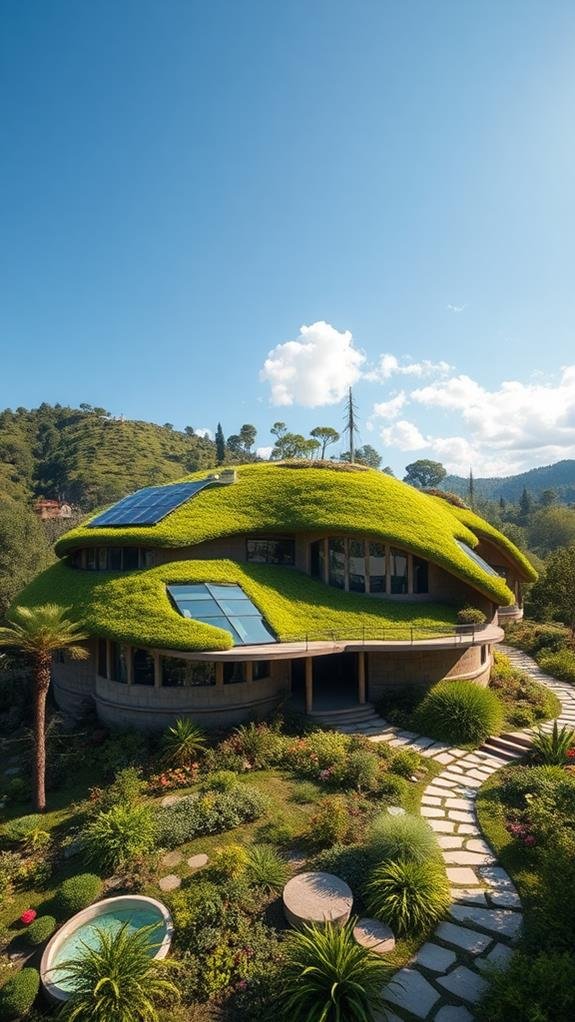
As climate change and resource scarcity continue to challenge modern living, the future of earth sheltered living appears increasingly promising. You might find these homes fascinating because they offer natural insulation, reducing energy costs.
Imagine living in a home that blends seamlessly with nature, providing protection from harsh weather. As more people seek sustainable options, builders are expected to pay closer attention to earth sheltered designs.
You’ll see innovations in materials and technology, making these homes more accessible for everyone. Plus, as society shifts toward eco-friendly practices, local governments may offer incentives to encourage such construction.
Conclusion
To summarize, earth sheltered homes offer a wonderful blend of energy efficiency, sustainability, and unique design. By using the earth for insulation, these homes stay comfortable year-round, reducing the need for heating and cooling. As you consider your living options, keep in mind the environmental benefits and creative possibilities that earth sheltered homes provide. They not only connect you with nature but also promote a more sustainable way of living, making them an exciting choice for the future.

